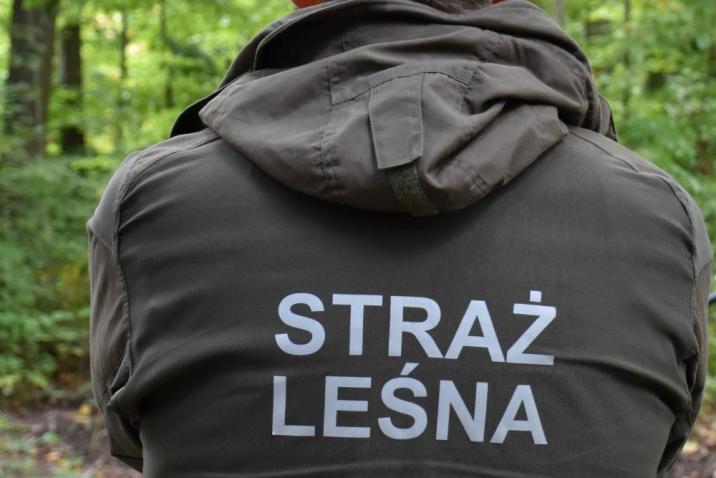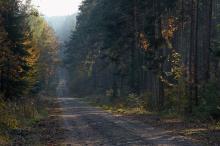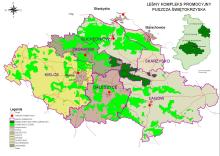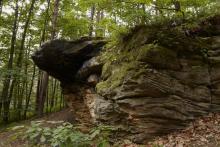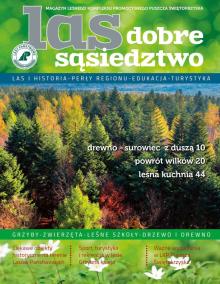 Asset Publisher
Asset Publisher
Polish forests
Poland is in the European lead, while concerning the area of all forests. They cover about 29,2 % of the country territory, and grow within the area of 9,1 million hectares. The overwhelming majority of the forests is state owned, of which almost 7,6 million hectares are managed by the State Forests National Forest Holding..
The number of Polish forest is still growing. The forestation rate of the country has increased from 21 % in 1945 to 29,2 % at the moment. Between 1995 and 2008, the forest area increased by 310 thousand ha. The basis for afforestation works is the "National Programme for Increasing the Forest Cover" (KPZL), assuming an increase of the forestation rate up to 30 % by 2020 and up to 33 % by 2050. Polish forests abound in flora, fauna and fungi. 65 % of the total number of animal species live there.
The forests grow in our country on poor soils, mainly because of the development of the agriculture in previous years. It influences the distribution of the types of the forest sites in Poland. Over 55 % of the forest areas is covered with coniferous forests. In other areas, there are forest sites, mainly the mixed ones. Their small part constitute alder and riparian forests – not more than 3 %.
In the years 1945 – 2011 the area of natural deciduous tree stands within the area of the State Forests National Forest Holding increased from 13 to 28,2 %.
Within the lowlands and uplands the most often occurring tee species is pine. It covers 64,3 % of the forest area of the State Forests National Forest Holding and 57,7 % of private and commune forests. In the mountains the predominant species is European spruce ( in the west) and European spruce with beech (in the east). Domination of pine is the result of carrying on sustainable forest management in the past. Once, the monocultures (crops or cultivations of one species) were the answer to the great demand of industry for wood. Such forests appeared to be quite fragile to climatic factors. They also were often the prey of pests' expansion.
In Polish forests, the share of other tree species, especially deciduous trees have been systematically increasing. The foresters have stepped aside from monocultures – that is why, they try to fit specific species of the forest stand to the natural stand, that would be proper for the given area. Thanks to that, in the years 1945 – 2011, the area of the deciduous tree stands within the lands of the State Forests National Forest Holding increased from 13 to 28,2 %. There occur more and more frequently the following tree species: oaks, ashes, maples, sycamore maples, elms, but also birches, beeches, alders, poplars, hornbeams, aspens, tilias and willows.
Our forests are the most often represented by the forest stands aged 40 to 80 years. The average age of the forest equals 60 years. More and more trees are of big size at the age over 80 years. Since the end of the Second World War, the forests' area has increased up to almost 1,85 million hectares.
Raport o stanie lasów w Polsce 2012
 Asset Publisher
Asset Publisher
Podsumowanie akcji „Jesień 22”
Podsumowanie akcji „Jesień 22”
Strażnicy leśni wraz z terenowymi pracownikami nadleśnictw, policją i strażą łowiecką w dniach 21-30 września uczestniczyli w ogólnopolskiej akcji „Jesień 22”. Działania miały na celu zapewnienie bezpieczeństwa korzystającym z lasu, ochronę zasobów przyrodniczych, a w szczególności egzekwowanie od osób przebywających na terenach leśnych zachowań zgodnych z obowiązującymi przepisami.
W akcji na terenie nadleśnictw Regionalnej Dyrekcji Lasów Państwowych w Radomiu uczestniczyło 64 strażników leśnych. Wspólnie z pozostałymi służbami przeprowadzili 270 kontroli, podczas których wykryli 573 nieprawidłowości. Wśród niewłaściwych zachowań najwięcej było przypadków nielegalnego wjazdu pojazdami do lasów – aż 417, w tym jeden przypadek tzw. nielegalnego off-roadu. W dalszej kolejności wykryto przypadki zaśmiecania lasu – 17. Aż 16 z nich dotyczyło wędkarzy, łowiących ryby w zalewie Siczki. Ponadto strażnicy leśni wykryli pięć przypadków nielegalnego wyrębu drzewa. Wartość skradzionego w ten sposób drewna wyceniono na prawie tysiąc złotych.
W trakcie akcji stwierdzono też dwa przypadki kłusownictwa. Do jednego z nich doszło w leśnictwie Stróża w Nadleśnictwie Ostrowiec Świętokrzyski. Podczas pełnienia obowiązków służbowych podleśniczy znalazł na zrębie tuszę łosia, pozbawioną głowy. Zwierzę zostało prawdopodobnie postrzelone. O sprawie została poinformowana policja. Do drugiego zdarzenia doszło w leśnictwie Rajec w Nadleśnictwie Radom – tu pracownik znalazł zastrzelonego łosia. Ta sprawa również została zgłoszona policji.
W ramach akcji „Jesień 22” strażnicy kontrolowali również środki transportu przewożące drewno oraz składowanie drewna. Wykryli jeden przypadek niewłaściwego przewozu drewna.
Warto dodać, że w trakcie prowadzonych działań nie wykryto przypadków kradzieży drewna oraz niszczenia i kradzieży mienia (np. infrastruktury turystycznej). Nie miały też miejsca zdarzenia szczególnie niebezpieczne.
Stosunkowo mała liczba przypadków kradzieży drewna, kłusownictwa i niszczenia mienia pokazuje skuteczność strażników leśnych w walce ze szkodnictwem leśnym.
Podsumowując tegoroczną akcję na terenie RDLP w Radomiu straż leśna podkreśla również znaczącą rolę pozostałych służb, w tym policji i straży łowieckiej, w przeprowadzeniu działań. Współpraca z innymi służbami daje dodatkowe wymierne efekty w przeciwdziałaniu łamania prawa na terenie lasów. Wspólne działania regulują porozumienia podpisywane przez służby.
Akcja o kryptonimie „Jesień 22” miała charakter ogólnopolski. W całym kraju wzięło w niej udział prawie tysiąc strażników leśnych, którzy wykryli ponad 12,5 tys. nieprawidłowości. Okazało się, że największym problemem w skali kraju jest nielegalny wjazd pojazdem do lasu – ponad 9,5 tysiąca przypadków.


 fot. Paweł Fabijański
fot. Paweł Fabijański
 fot. Paweł Fabijański
fot. Paweł Fabijański
 fot. Paweł Fabijański
fot. Paweł Fabijański

